Super Contributions 2015 / 2016
CONCESSIONAL / DEDUCTIBLE CONTRIBUTIONS BY EMPLOYERS FOR EMPLOYEES
Maximum contributions for each employee up to 75 years of age, including “salary sacrifice” (needs to be proactive) and superannuation guarantee payments without incurring excess concessional contributions tax: $30,000*
The 2015/2016 Budget proposed a $25,000 concessional contributions cap from 1 July 2017. The Budget also proposed that, from 1 July 2017, individuals with a superannuation balance of less than $500,000 can make “catch up” concessional contributions where they haven’t reached their cap in previous years (unused concessional cap from 1 July 2017 may be carried forward on a rolling basis for a period of five consecutive years).
Condition:
Members over 65 must satisfy the work test. For members over 70 the work test applies and only contributions received before the 28th day after the end of the month in which a member turns 75 are deductible.
From 1 July 2017, the Budget proposes to remove the work test for those aged 65 to 74 in respect of super contributions.
CONCESSIONAL / DEDUCTIBLE PERSONAL CONTRIBUTIONS BY INDIVIDUAL TAXPAYERS INCLUDING INVESTORS
Maximum contribution by each individual up to age 75 without incurring excess concessional contributions tax: $30,000*
Conditions:
- Less than 10% of assessable income including reportable employer super contributions and reportable fringe benefit amounts are attributable to employment.
- The individual must notify the fund of intention to claim a deduction (form NAT 71121) and the fund must acknowledge the notice.
- Contribution cannot create or increase a loss (deduction cannot exceed taxable income).
- Members over 65 must satisfy the work test (the Budget proposes removing the work test for those aged 65 to 74 from 1 July 2017).
- Only contributions received before the 28th day after the end of the month in which a member turns 75 are deductible.
Effectively, with the removal from 1 July 2017 of the work test for 65 to 74 year olds, all members under 75 will be able to claim a tax deduction for super contributions whether self-employed or wage/salary earners.
*TRANSITIONAL CONCESSIONAL / DEDUCTIBLE EMPLOYER AND PERSONAL CONTRIBUTIONS
The concessional limit in 2015/2016 is $35,000 for persons aged 49 or over on 30/06/2015. The Budget proposes a $25,000 concessional cap from 1 July 2017.
TRANSITION TO RETIREMENT PENSIONS
The Budget proposes, from 1 July 2017, that the tax exemption on earnings of assets supporting these pensions will be removed – ie not tax free earnings in the fund but taxed at the 15% rate as for accumulation phase assets.
HIGH INCOME EARNER CONTRIBUTIONS (DIVISION 293)
From 1 July 2012, an additional 15% “contributions tax” has applied to individuals with adjusted taxable incomes (broad definition) exceeding $300,000. The Budget proposes a reduction to $250,000 from 1 July 2017.
NON-CONCESSIONAL / NON-DEDUCTIBLE CONTRIBUTIONS BY INDIVIDUAL TAXPAYERS
The Budget introduced a lifetime cap of $500,000 non-concessional contributions made on or after 1 July 2007, effective immediately from 3 May 2016. This replaces the $180,000 cap and bring forward rule. Anyone exceeding the lifetime cap prior to 3 May 2016 is not required to remove the excess, however exceeding the lifetime cap after that date requires removing the excess, otherwise a penalty tax applies.
EXCESS CONCESSIONAL / DEDUCTIBLE AND NON-CONCESSIONAL / NON-DEDUCTIBLE CONTRIBUTIONS
An excess contributions tax of 31.5% and 46.5% was previously payable in respect of concessional and non-concessional contributions which exceeded the maximum amount allowed. However, from 1 July 2013 only excess concessional contributions will be taxed at the member’s marginal tax rate and an interest charge applied. The excess may be withdrawn from the fund.
The punitive taxes remain for excess non-concessional contributions and the rate increased from 1 July 2014 to 47%.
GOVERNMENT CO-CONTRIBUTION
The Government co-contribution of up to $500 is available to employees/the self-employed who are aged less than 71 at the end of the income year. They must make non-concessional/undeducted personal super contributions of up to $1,000 and their total income (assessable, reportable employer super contributions and reportable fringe benefit amounts) must be less than $50,454. The lower threshold of $35,454 allows for the full co-contribution of 50c/$1.
Conditions:
- 10% or more of the individual’s total income is attributable to employment or carrying on of a business.
- Salary sacrifice super contributions are included in assessable income from 1 July 2009.
GOVERNMENT CONTRIBUTIONS FOR LOW INCOME EARNERS
From 1 July 2012, concessional contributions made by or on behalf of individuals with adjusted taxable incomes of up to $37,000 will be matched by the Government, up to an annual maximum amount payable of $500.
The Budget proposes that, from 1 July 2017, this will be replaced by a Low Income Superannuation Tax Offset (LISTO) for funds – a non-refundable offset based on the tax paid on concessional contributions made on behalf of low income earners, up to a cap of $500, and applied to members with adjusted taxable income of up to $37,000.
CONTRIBUTIONS FOR SPOUSE – TAX OFFSET
A taxpayer making a personal non-concessional/non-deductible contribution for his/her non working or low income spouse is eligible for a tax offset of up to $540 where a contribution of up to $3,000 is made for that spouse. However, the spouse’s assessable income, reportable fringe benefit and reportable super contribution amounts must not exceed $10,800. The offset is phased out at $13,800.
Condition:
No work test applies if the spouse is under age 65, but between ages 65 and 70 the spouse must satisfy the work test. No offset applies if over 70 years of age.
The Budget proposes that, from 1 July 2017, the income threshold for spouses will increase to $37,000 and phase out at $40,000. Plus, the work test will be removed for those aged 65 to 74 in respect of super contributions.
FUND ACCEPTANCE OF CONTRIBUTIONS – AGE AND WORK TEST
A regulated superannuation fund may accept contributions as follows:
- If the member is under 65 – all contributions made.
- If the member is 65 or more but under 70 – mandated employer contributions and/or employer or member contributions provided the work test is satisfied.
- If the member is 70 or more but under 75 – mandated employer contributions and/or employer or member contributions up to the 28th of the month in which the member turns 75 and the member satisfies the work test.
- If the member is 75 or more – mandated employer contributions.
A person satisfies the work test if gainfully employed at least 40 hours in a period of not more than 30 consecutive days in that financial year. Again, from 1 July 2017 the work test will be removed for those aged 65 to 74 in respect of super contributions.
SUPER GUARANTEE CONTRIBUTION RATE
From 1 July 2014, the rate was increased from 9.25% to 9.5% and will remain so until 1 July 2021 when it will increase by 0.5% each year until the rate is 12%.
REPORTABLE EMPLOYER SUPER CONTRIBUTIONS (RESC)
From 1 July 2014, the payment of salary sacrifice superannuation and other additional* super over and above the compulsory super guarantee charge of 9.5%, paid by employers for employees, will need to be recorded on employees’ year end PAYG summaries.
*where an employee influences the rate or amount of employer contributions.
An employee is considered to have the capacity to influence if he or she can directly negotiate the rate or amount of employer contributions. As a guideline, this may be shown by:
- The employer’s relationship with the employee – e.g. the employee is the spouse of the employer.
- The employee’s involvement in negotiations/preparation concerning the terms of any industrial agreement governing super contributions.
- The amount contributed for the employee relative to the compulsory contributions the employer is required to make.
- The employer’s super contribution arrangements for other employees.
- Any non-arm’s length dealings.
SUPERSTREAM STANDARD FOR CONTRIBUTIONS – AN EMPLOYER’S PERSPECTIVE
This standard is aimed at improving the efficiency of the superannuation system by requiring employers to submit data and make payments for super contributions on behalf of employees electronically. This will ensure employer contributions are paid into a member’s account in a consistent, timely and efficient manner.
Although implemented on 1 July 2015, the ATO allowed a 12 month period of grace for employers to “get it right” with respect to the new payment and reporting standard. After this, the ATO will be undertaking compliance checks and may issue penalty notices or fines to employers who have failed to take reasonable steps or genuine attempts to meet their SuperStream obligations.
As every business is different, there is no ‘one size fits all’ approach to adopting SuperStream. The following options are available to assist employers to meet their requirements:
- Upgrade payroll software
- Outsource payroll function or use other service provider
- Use a commercial clearing house or the free Small Business Superannuation Clearing House (for employers with 19 or fewer employees)
To support contributions being made using the SuperStream standard employers will need to collect the following information from their employees (if not already on hand):
- Unique superannuation identifier (USI) for APRA-regulated funds
- ABN for SMSF funds
- Bank account details
- Electronic service address
Most employers do not need to understand the technical detail of SuperStream as the data requirements will be sourced from a complying payroll system. However, your payroll officer will need to become familiar with the data and processing requirements of SuperStream.
Please contact your advisor for more information.








